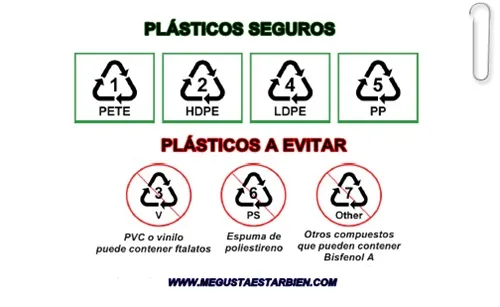Obesity, age or lack of exercise are factors commonly associated with the risk of diabetes.However, lately, environmental factors are taking special importance, such as traffic, or endocrine disruptors, which are those chemical compounds that mimic, block or interfere with our hormones.
Within these disruptors, bisphenol A stands out, a compound widely used to manufacture the plastics that are present in many food or drink containers, or in the CD, DVD or vinyl.It is also a very controversial compound, because it has been observed that leads to important effects on health.Ángel Nadal, Professor of Physiology at Miguel Hernández University of Elche, who has been studying this compound for about 15 years, explains to El Mundo some of the risks of bisphenol to: "The main effects are mainly on the development of the nervous system, andIn greater susceptibility to suffering from prostate or breast cancer, in addition to metabolic alterations, such as diabetes or obesity. "
For these complications, the European Union prohibited, five years ago, the presence of this compounds in children's bottles.Later, France vetoed him in those plastics who are in contact with food.However, in January of this year, the European Food Security Agency (EFSA) assured that the compound does not imply any risk to consumers' health "at current levels."Even so, it reduced the recommended security levels from 50 to four micrograms per kilogram of weight per day.
"Right now, nobody discusses that bisphenol A produces adverse health effects, what the EFSA questions is whether the level of exposure we have is enough to cause harmful effects," explains Nadal, a researcher who, together with PalomaAlonso-Magdalena, a professor of nutrition at Miguel Hernández University of Elche, now provides new evidence of susceptibility that bisphenol to causes.In an investigation published by the Endocrinology magazine, both authors show that exposure to this compound during pregnancy would increase the risk of a future type 2 diabetes.
The study was carried out using mouses, which were divided into three groups: some were not given bisphenol, others were given 10 micrograms a day, and others, 100. Seven months after delivery, the researchers observedThat the females to whom the compound had been administered had a slight overweight and had less mass in their pancreatic beta cells, which made them produce and release less insulin.
"The result is that, after childbirth, these females do not have type 2 diabetes, but they did have a greater predisposition to suffer from it. Therefore, if they followed a diet with too many fats, they would have more chances of suffering from it," Nadal explains.
Seen the results, it is worth asking if these effects, which have been observed in mice, would be extrapolable to humans, in this case, pregnant women."At the moment, this is the first study that describes this situation, we do not know if it would also be fulfilled in people or not. What we do know, is that in 2006 we publish that bisphenol produced, in male mice, greater insulin resistance, and this is something that, later, other groups have demonstrated in epidemiological studies with people, "says Nadal.
The investigation makes it clear that the effects of bisphenol A on these mice occurs from the 10 micrograms per day.The current limit for people is four.With these data, Nadal states: "It is not so far from the limit, and I wonder, is this a margin that leaves us safe?" Questiona Nadal, who explains that one thing is the average level of exposure of thePopulation, but "maybe", there are people who are exposed to higher levels.
A fact to take into account of the study is that the effects described above (overweight, lower insulin secretion) were not observed in mice that were not pregnant."We hypothesize that this has to do with the hormones that increase during pregnancy, specifically the estrogens: we believe that it is that synergy between bisphenol A and that hormone cocktail that produces those alterations that have been seen in pregnant mice", account.
This would agree with one of the things that are already known, and that Nadal explains to this newspaper, and that is that "the period in which the effects of exposure to bisphenol A are greater is during pregnancy, and these will be shown in theoffspring".
For Miquel Porta, a researcher outside this publication and professor of Public Health of the Hospital del Mar Institute of Medical Research (IMIM) and the Autonomous University of Barcelona, this study "complements very coherently, which has observed more than one hundred epidemiological studies"In his opinion, "we cannot always be denying uncomfortable and very worrying findings, and it is time for political parties to cease to be so negligent with the environmental causes of this and so many other diseases: electoral programs must include concrete measures to reduce thecontamination of citizens by endocrine disruptors. "
Nadal does not consider that the issue of bisphenol is infralegislado, "what happens is that science is advancing, and therefore, we must be attentive to the new evidence that appears, because perhaps low concentrations but close to which we canBeing exposed can represent a problem. "


